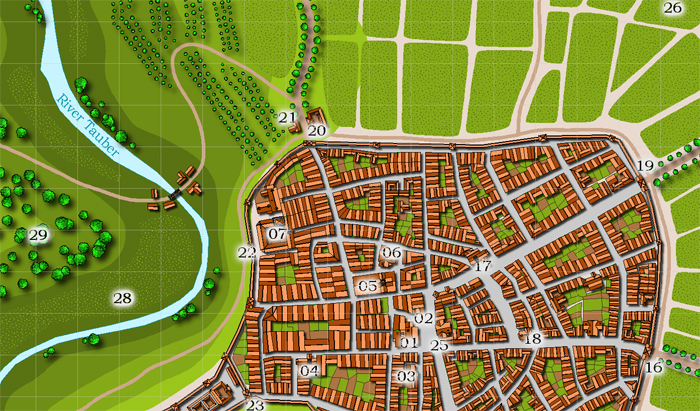

- #Profantasy city designer manuals#
- #Profantasy city designer pro#
- #Profantasy city designer psp#
- #Profantasy city designer windows#
#Profantasy city designer psp#
in PSP to make them web-accessible, for example.) CorelDraw or Visio (or any other "draw" package) would be better, but they lack the gamer-oriented stuff that makes CC2 so great. The bitmaps which CC2 exports can be tweaked, resized, etc.

(This doesn't mean they don't have a place, of course.
#Profantasy city designer pro#
Paint packages like Paintshop Pro simply don't have the intelligence needed to be able to manipulate often hundreds of objects on the screen at a time. The inevitable question I'm going to face is "what does CC2, et al provide that I can't get from (CorelDraw/Paintshop Pro/Visio/whatever)? The answer is simple: a whole lot. They can be exported as bitmaps and imported into other tools to be made web-ready. They can be hot-linked together to give you hypertext-like map navigation. They can be printed in a wide range of formats with incredible control over details. They can be distributed electronically and viewed/printed with a freeware CC2 viewer. Once you have made your maps, CC2 gives you many options for using them.
#Profantasy city designer manuals#
If you're having trouble with a particular feature, between the tutorial manuals (in a stunning reversal of accepted software industry practices, ProFantasy has actually provided useful manuals), the online help and the example maps you should easily be able to figure it out. As you learn to use the system, you'll find that you can make new symbols, composite objects, fill styles and templates of your own suited to your specific needs. Out of the box these packages come with a near-bewildering (luckily very well-organized) variety of tools, symbols, composite objects, fill styles and templates to get you up and mapping as quickly as possible. Once the initial learning curve has been passed, CC2 and its add-ons give GMs a rich palette of tools to detail a campaign world. The effort is well-spent, however, because the capabilities of the tool are just without par. Because of this major shift in paradigm, new users of CC2 face a steep uphill climb in learning to use the tool.
#Profantasy city designer windows#
Unlike the usual Windows process where you select what is to be operated upon and then select the operation (like selecting text in a word processor and then selecting the Format -> Font -> Bold menu item, say), in CC2 the user selects the command and then selects the object set it is to be applied to. The core of the difference is that CC2 is essentially a command-driven CAD engine with a GUI grafted on. Sure there are the expected menus and icons and stuff, but they're used in subtly different ways from the kinds of applications that users are likely to be familiar with. Unfortunately what it also means is that it doesn't work like any software most Windows-capable people have used before (as spelled out in The Windows Interface: An Application Design Guidea book most Windows software developers should be forced to read at gunpoint).

What this means is that it allows for very precise layout of lines and shapes. The GoodiesĪt its core, this suite of software is a CAD package, one sufficiently powerful that it could be used for real-world work like planning out a garden or making floorplans of your home. DD2, a badly misnamed product since it has stuff for mapping far more than just dungeons, includes "geomorph" dungeon tiles, a large variety of symbols and tools to make passage design and wall modification pain-free. The practical application of this to mapping cities is obvious. CD2, for example, adds new symbols, fill styles and tools to quickly and easily build entire streets and grids with random housing symbols. In short it is a large package of GM goodies.Ĭity Designer 2 (CD2) and Dungeon Designer 2 (DD2) are add-on packages for CC2 which enhance the already-formidable capabilities of the core package.


 0 kommentar(er)
0 kommentar(er)
